In going through old file boxes from the 1970s, I found a number of clippings that effectively illustrate the Blaxploitation era of Hollywood filmmaking, a period from roughly 1971-75, when action and other genre films showcased black heroes and heroines, usually in reworkings of standard genre formulas. They were made quickly and cheaply to capitalize on a trend that could fade out at any time as it eventually did after its peak in 1972-73. These films played grindhouses and neighborhood theaters but also, for a time, premiered at the biggest Broadway movie palaces and commanded ads and constant press coverage. I usually saw them at Bronx neighborhood theaters where they were often paired with Italian westerns and, later, kung fu films, a trend which gradually displaced Blaxploitation. I’d like to share some of what I clipped 45 or so years ago, supplemented by movie stills from my collection and posters copied from IMDB and other sites.
BLACULA opened on August 25, 1972 at the Criterion Theater, the same theater where LAWRENCE OF ARABIA had played for over a year a decade earlier and FUNNY GIRL the same just four years earlier. I went with some friends from the Bronx to see the film at the Criterion on its second weekend and it may have been my first trip to the theater. The film starred William Marshall, a classically trained actor, whom we knew from roles in “The Man from U.N.C.L.E.” and “Star Trek” and a handful of movies, such as DEMETRIUS AND THE GLADIATORS, in which he played one of the gladiators and a close associate of Demetrius, and THE BOSTON STRANGLER, in which he’d played Senator Edward Brooke of Massachusetts. In BLACULA, he plays an African king who defies Count Dracula in the 19th century and is turned into a vampire who is revived in 1972 Los Angeles where he has a series of adventures and romance with a young woman who resembles his long-dead queen (Vonetta McGee). I remember enjoying the film a great deal although one overzealous audience member took exception to the scene where the vampire-hunting heroes use fire to burn attacking vampires. “You burn witches, not vampires!,” he shouted from his seat. That was a memorable evening. After the film we went to eat at Child’s House of Pancakes on 46th St. and Seventh Ave. and then walked a few feet to the Embassy Theater to see Stanley Kubrick’s A CLOCKWORK ORANGE. I should add that the Broadway movie houses had just recently raised their prices to $3.50 per ticket and this was the first time we were confronted with that. We were not pleased!
BLACULA had one sequel, SCREAM, BLACULA, SCREAM (1973), which co-starred Blaxploitation diva Pam Grier and managed not to replicate the thrills of the original. I saw it at a neighborhood theater on a double bill with the Lee Van Cleef Italian western DAY OF ANGER, the better film.
Speaking of Pam Grier, we had seen her in a Filipino women’s prison thriller, THE BIG DOLL HOUSE (1970), on a double bill with SHAFT back in 1971 and she’d died a bloody death in that one. And then we saw her in two 1972 thrillers, COOL BREEZE, which I don’t remember well enough to describe her role in, and HIT MAN, starring Bernie Casey, where she comes to a bad end after betraying Casey–he kicks her out of his car in a safari park and she gets mauled by lions. Poor Pam! American International Pictures decided to make her the co-star of her next movie, BLACK MAMA, WHITE MAMA (1973), a gender-switching variation on THE DEFIANT ONES, with Grier and Margaret Markov as escaped prisoners chained together in the Philippines. I’ve never seen it, so I don’t know her fate in it, but it made for a great ad.
(Notice Jonathan Demme’s name in the credits and the prominent billing given to location filming in the Philippines.) The film did well enough for AIP to give Grier her own starring vehicle, COFFY (1973), which I saw on a double bill with the sci-fi comedy, THE THING WITH TWO HEADS (1972), which happened to star Grier’s cousin, former football player, Roosevelt Grier.
COFFY was a tight little hard-edged crime thriller with Grier coming off pretty badass as a nurse-turned-avenging angel out to take down the drug dealers in her neighborhood by any means necessary. She gets quite a shock when she learns that someone close to her is in league with them and she shows him no mercy. The film was directed by Jack Hill, who had also directed Grier in THE BIG DOLL HOUSE and the similarly-themed THE BIG BIRD CAGE (1972) and would go on to direct her in her next starring vehicle, FOXY BROWN, which I didn’t see until I got it on VHS decades later. Her last two starring roles in the 1970s were SHEBA BABY, which I’ve never seen, and FRIDAY FOSTER, both 1975. FRIDAY FOSTER was based on a then-running newspaper comic strip about an ex-model-turned-magazine photographer who gets into various adventures and the role gave Grier a chance to be more playful, cute, glamorous and feminine.
This was an unusual double bill that I saw at one of the theaters listed (the Art Jerome) in the summer of 1972 and it deserves some comment:
TOP OF THE HEAP was actually an ambitious indie feature written, directed and produced by its star, Christopher St. John, who’d played an important role (as Harlem revolutionary Ben Buford) in SHAFT a year earlier. Here he plays a Washington DC cop who has to contend with corruption and racism in the department and resentment on the street from the black suspects he arrests. It was more of a thoughtful racial drama than most of the Blaxploitation crime pictures it was competing with, which may have impressed audiences, but didn’t really thrill them. The film was paired here with SOUL SOLDIER, which was actually made in 1970, pre-Blaxploitation, and was re-released to capitalize on the trend, even though it had little to offer audiences. Despite the ad’s claim, “Made by blacks for blacks,” SOUL SOLDIER was made by whites. It was a routine, low-budget cavalry western about black troopers in the southwest of the 1870s and starred Rafer Johnson, Lincoln Kilpatrick and Robert Doqui, along with veteran name actors from Hollywood, “Batman”‘s Cesar Romero and “Perry Mason”‘s Barbara Hale as an army colonel and his wife. As I recall, the villain was one of the black soldiers, Kilpatrick, who antagonized heroes Johnson and Doqui no end. This despite the poster’s tagline: “They were black troopers who fought and killed the red man for a white government that didn’t give a damn about either one!” I don’t recall much in the way of political commentary in the actual film.
One of the black newspapers at the time, Soul, I believe, promoted the film with this image and caption:
Here’s another curious ad:
I don’t have the date of it, but I’m assuming this double bill was presented in 1973. I passed the theater, the New Penthouse (actually the one-time balcony of the by-then twin-plexed Cinerama, later renamed the RKO Warner), when it was showing and saw all the displays for it and was struck even then by the obvious cash grab going on. I believe this is the only theater that played this program. THE MAN FROM C.O.T.T.O.N. was actually a retitling of the 1963 film, GONE ARE THE DAYS!, an adaptation of the play, “Purlie Victorious,” which was written by Ossie Davis, who starred in both the play and the film, and ran on Broadway for eight months in 1961-62. As the ad states, the film is indeed literally in black-and-white, which may have startled some audiences expecting a new film in 1973. Ossie Davis and Ruby Dee are the stars of the film, yet they are billed beneath supporting actor Godfrey Cambridge, who had starred in the two most notable predecessors of Blaxploitation, both from 1970, COTTON COMES TO HARLEM, directed by Ossie Davis, and THE WATERMELON MAN, directed by Melvin Peebles. The fabricated new title, THE MAN FROM C.O.T.T.O.N., references both COTTON COMES TO HARLEM and the TV show, “The Man from U.N.C.L.E.,” which had been off the air for five or six years by this point. Alan Alda and Sorrell Booke, two white actors, are also billed above Davis and Dee. Alda had recently become a TV star thanks to the hit show, “M*A*S*H,” which premiered in the fall of 1972, while Booke was still six or seven years away from his co-starring role on “The Dukes of Hazzard,” so I don’t know why he was given such prominent billing. Both Davis and Dee were quite famous by this point, so I can’t understand why the ad demotes them like that. As I recall, GONE ARE THE DAYS! might even have already played on TV by then. Very odd.
The co-feature, SERGEANT JIM, appeared from the photos illustrating it in the theater foyer to be a World War II adventure starring John Kitzmiller, best known for playing Quarrel, James Bond’s Jamaican sidekick, in the first Bond film, DR. NO (1962). He’d had an extensive career in Europe after the war and this was evidently a European film. It wasn’t until I researched this piece that I learned the film is actually VALLEY OF PEACE, a Yugoslavian film from 1956, also in black-and-white, about two children who are wandering the countryside after losing their families in a bombing raid, looking for a “valley of peace.” Kitzmiller plays a downed American pilot on the run from pursuing Germans who opts to escort the children to safety, at great risk to himself. Sounds like an intriguing film, but I don’t think it “rips at you with explosive force” like the ad claims. I wonder what unsuspecting Times Square audiences must have thought. If only I’d been adventurous enough to go in myself.
Here’s a shot of Godfrey Cambridge, along with co-star Raymond St. Jacques, in COTTON COMES TO HARLEM:
This newspaper photo is promoting the third Shaft film, SHAFT IN AFRICA (1973), which I saw on a double bill with a reissue of the aforementioned HIT MAN.
In the photo, Shaft is confronting Yugoslavian actress Neda Arneric, who plays the mistress of the lead villain (Frank Finlay). She and Shaft wind up having a fling in which she’s in awe of how well endowed he is. The poster for the movie made reference to this in a most unsubtle way:
A far cry from the current BLACK PANTHER, I daresay.
I wrote about the original SHAFT here in an account of my first trip to a 42nd Street theater.
Here are some other random clippings I found in the files:
Poor Shelley–and less than a year after her fourth Oscar nomination:
COOL BREEZE (1972) was a black cast remake of John Huston’s caper classic, THE ASPHALT JUNGLE (1950). Judy Pace played one of the heroes’ girlfriends.
Pace was also in COTTON COMES TO HARLEM, seen here with Dick Sabol:
Look at the movies you could see in Manhattan in the summer of 1972 (one of these movies is not like the others):
Fred Williamson in the first and second of his three westerns with notorious titles:
Another Williamson vehicle:
Blaxploitation meets Kung Fu:
I saw BLACK BELT JONES on a double bill with the unrelated CLEOPATRA JONES, but I missed the Filipino-made BAMBOO GODS AND IRON MEN (1974).
However, I did see James Iglehart in another Filipino-made action adventure, SAVAGE, in 1973 on a double bill with the kung fu movie, THE SHANGHAI KILLERS. As I recall, it was a moderately entertaining low-budget Filipino war movie about rebels battling government troops and the three American leads casting their lot with the rebels.
Iglehart’s son, James Monroe Iglehart, would star on Broadway decades later in both “Aladdin” and “Hamilton.”
The black press at the time included publications like Soul, Black Stars, and The Black American, that focused on the media, music and movies. Here’s a cover from the weekly tabloid, Soul, from December 1972, along with pictures from the cover article:
Please note that the captions for the first and third photos in the top row should be reversed:
And the article itself, by Walter Burrell:
I realize that the print may be too small to read, so I’ll type the opening and closing paragraphs here. With only minor adjustments, these paragraphs could easily be inserted into articles about BLACK PANTHER and its recent historic opening weekend. To think so little has changed in 45 years. The opening paragraph refers to the success of Melvin Van Peebles’ indie movie, SWEET SWEETBACK’S BAADASSSSS SONG (1971).
Opening paragraph:
If Melvin Van Peebles doesn’t do another significant thing during the rest of his whole career, he’ll still go down in history as the man who, more dramatically and emphatically than any other, opened Hollywood’s eyes to the fact that Black folks do, indeed, go to see movies. And that they, in fact, purchase more movie tickets percentage-wise than whites do.
Closing paragraphs:
So not only is Black beautiful at the box office, it’s also a source of potential political power. But one thing is certain: The onslaught of Blacks in films has altered the motion picture industry in a way from which it will never emerge the same. And we have still to determine the effect of these films on our image and attitudes of ourselves.
Perhaps the most immediate goal is to get more of the profits from these films away from the big-white-controlled studios and into the pockets of Blacks. Commercializing the Black image on screen is one thing, but watching white people get fat off it is another.
Finally, a drawing I did for an imaginary movie capturing the zeitgeist of the time. This was done after COTTON COMES TO HARLEM and THE WATERMELON MAN, but before SHAFT. Four of the names involved in COTTON, the director and three of the cast, are featured in this ad, along with names from other movies and TV shows I’d seen around that time:
With Ossie Davis’s credit as “President Burke,” it’s clearly positing the first black president. Don’t ask me what characters I had in mind for the other actors listed (especially Eleanor Parker!) or what the plot was supposed to be. And notice the production credits on the bottom. One of those names is not like the others.

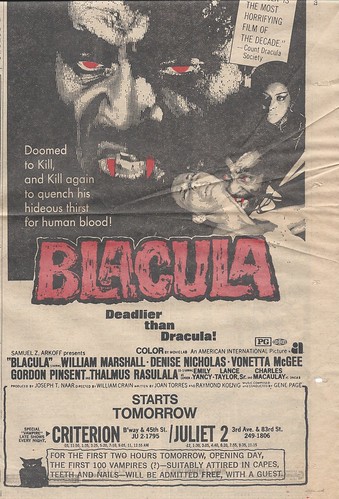
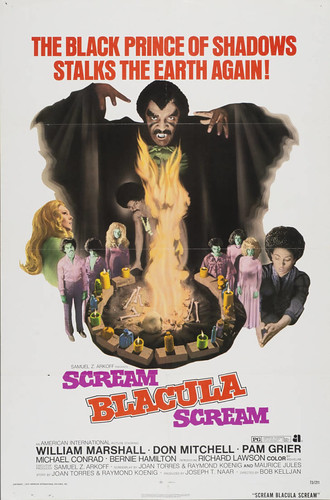


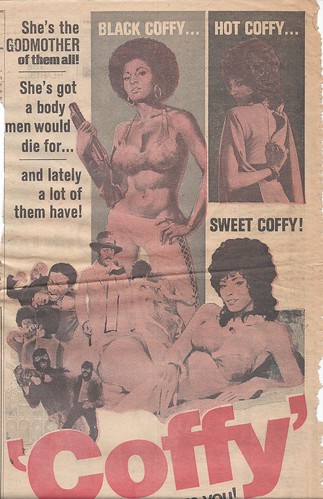

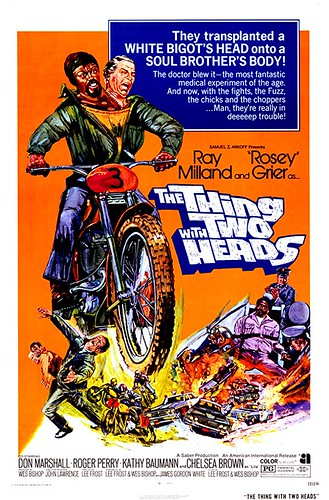
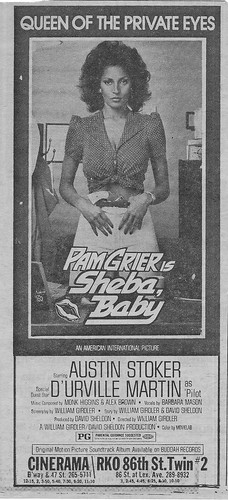
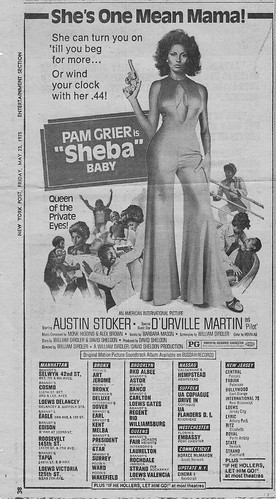



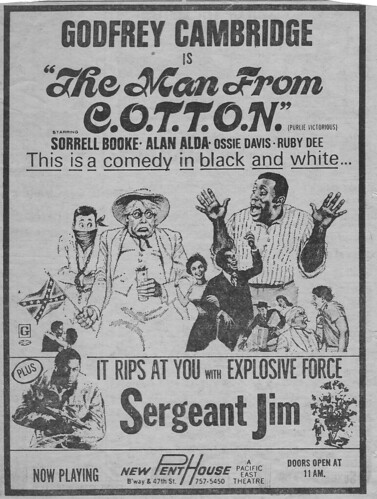

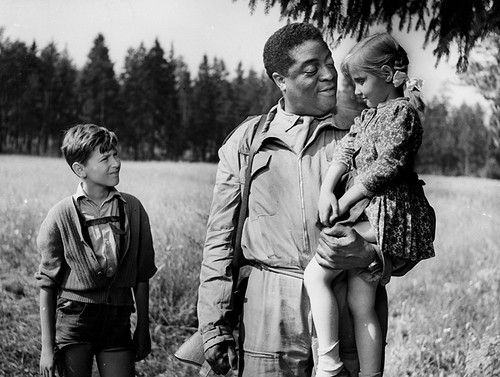
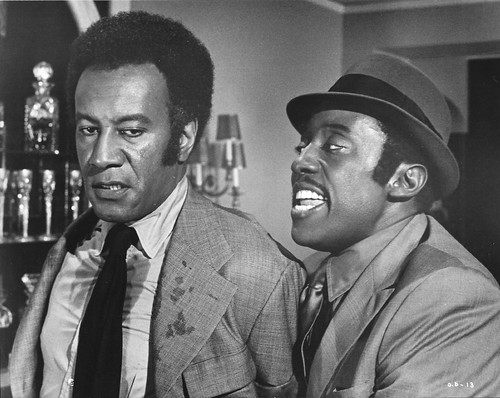
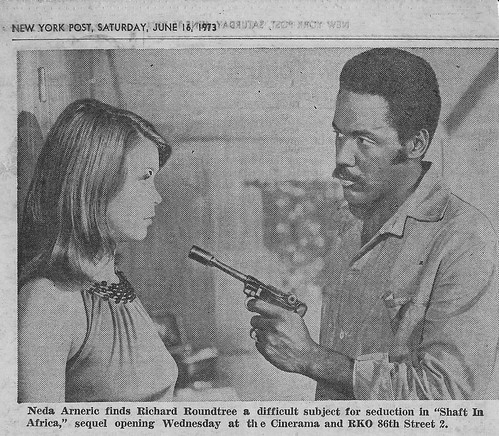








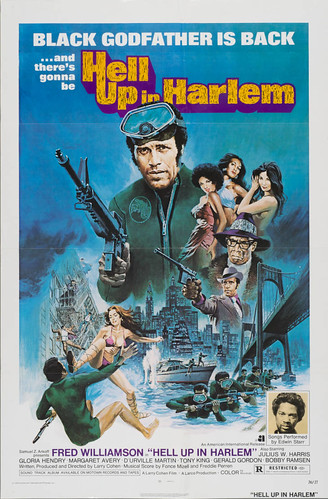


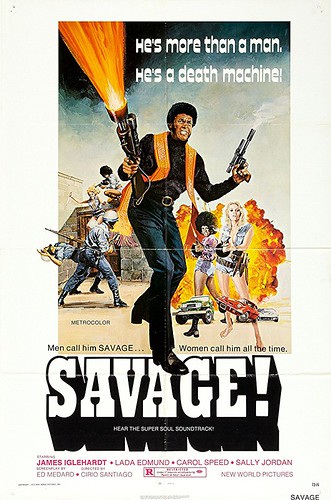
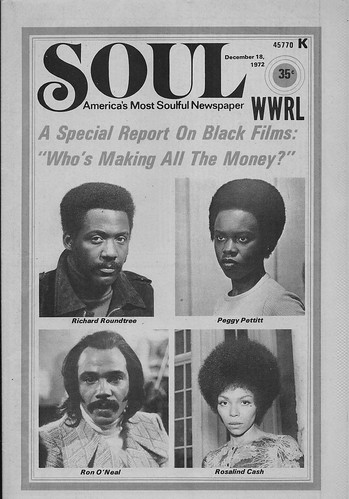

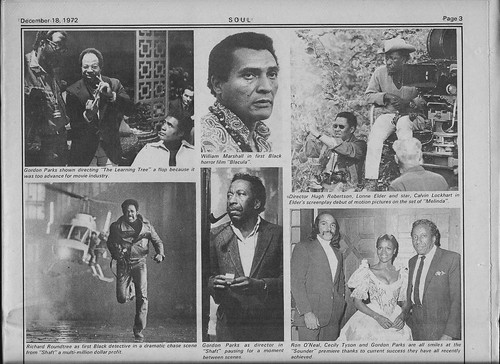

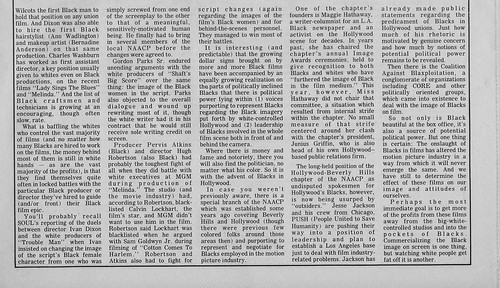

What a splendid post! Might I reblog it, please?
Also: I’ve never seen Sheba, Baby either, but look what I just found on YouTube: https://www.youtube.com/watch?v=YmtIKWKukxE
Wow, now I can finally see SHEBA, BABY! Thanks! Oh, and go ahead and reblog.
Thanks!
Aaargh! Just discovered you don’t have a Reblog button. I’ve approximated to the best of my abilities — hope that’s okay!